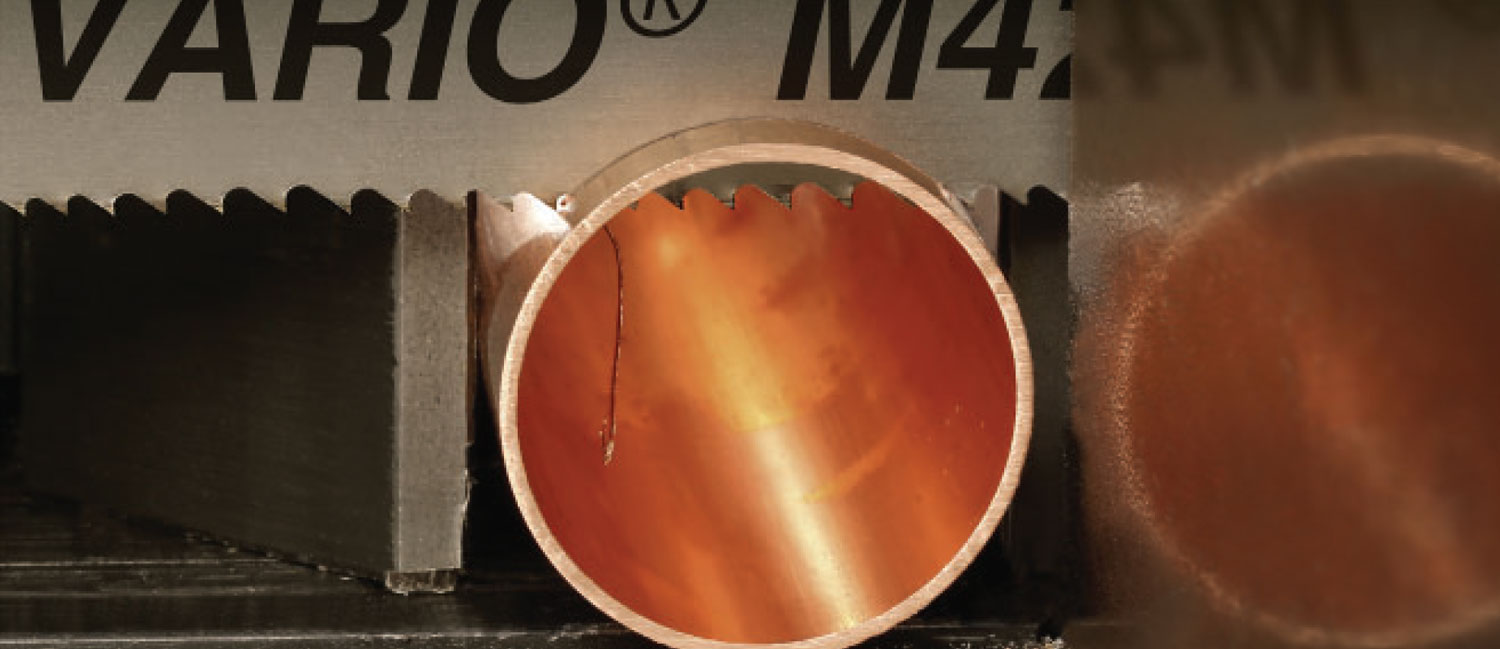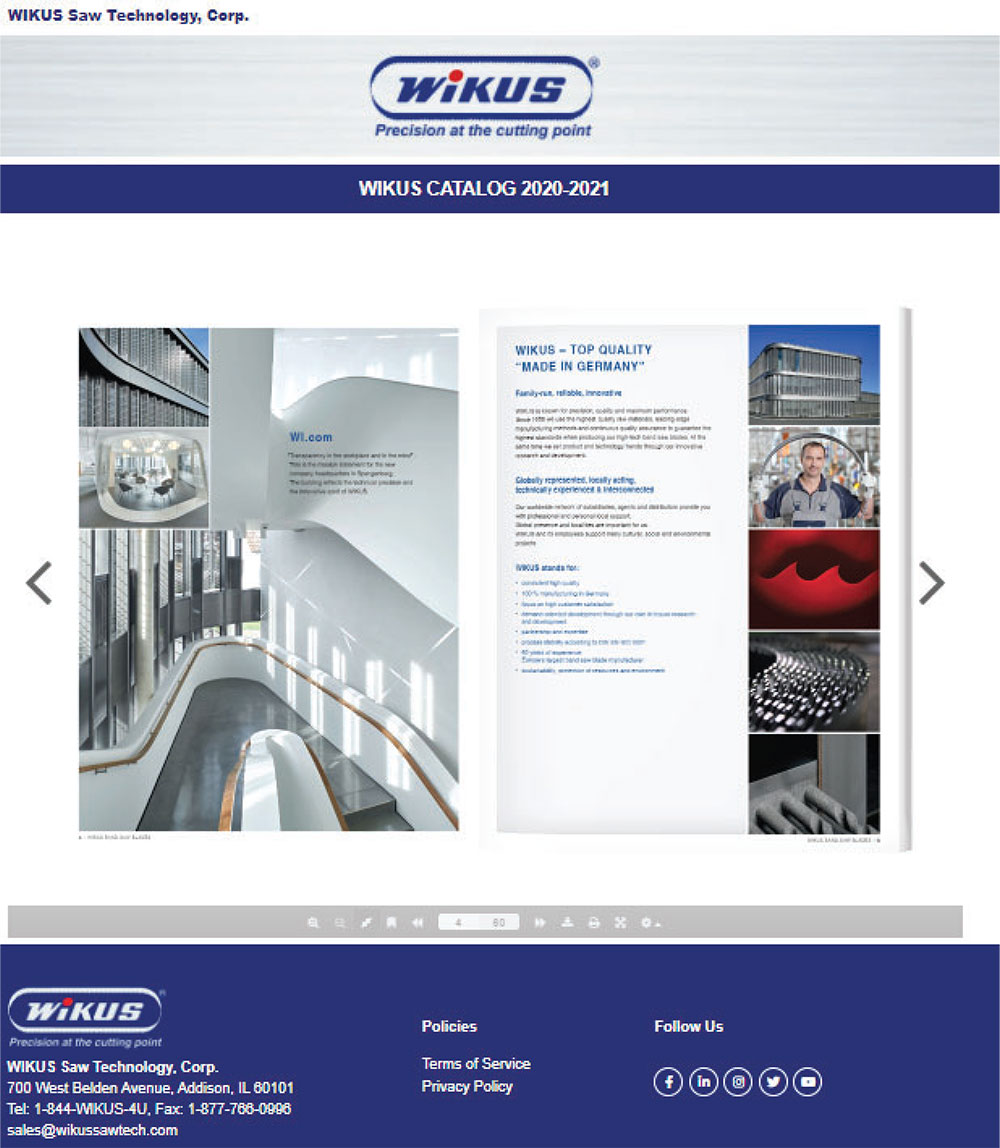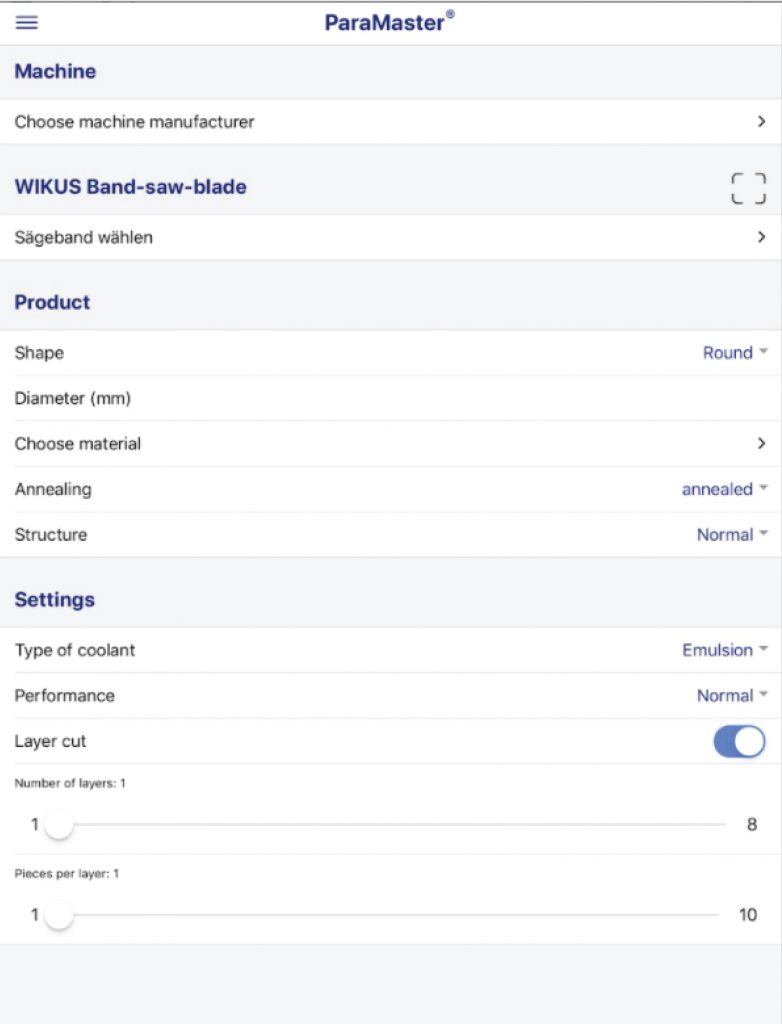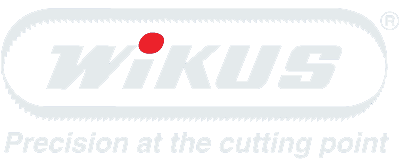Production quantities of cut tube and pipe can be produced economically with a band saw. However, the choice of which blade to use is very important in maintaining a low cost per cut.
Band saws use a thinner blade than do cold saws, so they minimize kerf loss, and their design is conducive to nesting or stacking stock for simultaneous sawing of many pieces. With a band saw, however, the choice of which blade to use is very important in maintaining a low cost per cut.
Work piece geometry can make sawing tube and pipe more difficult than sawing solid bars or plate because the saw blade is performing two types of cuts. As it enters the work piece, it is cutting a solid. After the blade penetrates the inner wall of the hollow work piece, it is cutting two thin solids with a space between them (called an interrupted cut). If there were such a product as a “magic blade” for tube and pipe, it would start cutting aggressively with a coarse pitch (fewer number of teeth per inch), have deep gullets to carry away chips, and have a positive rake to help the blade penetrate the solid. As the blade cut through the walls, it would magically change to a neutral rake blade with more teeth and shallower gullets. To finish the cut, the blade would change back again to a coarse pitch, aggressively configured blade. Since there is no such thing as a magic blade, blade variables and band saw settings have to be selected to provide the best overall performance for sawing tube and pipe.
Blade Pitch
Pitch, or number of teeth per inch, is a significant variable in cutting tubing because the number of teeth in contact with the work piece determines both blade performance and durability. Among the forces acting on the teeth as they cut are the downward force of the saw head pushing the teeth into the cut and the pulling force as the blade moves through the cut.
If only one or two teeth are in contact with the work piece, the teeth can be stripped from the blade, bent, or prematurely dulled. At the other extreme, when too many teeth are engaged, the force on each tooth is so low that it either has too little penetration or none at all. Cutting is slowed, or if the teeth are unable to penetrate the work piece, work hardening may occur, making the tube uncuttable.
Manufacturers recommend that at least 3 teeth and no more than 24 always be in contact with the work piece. Within that range, shock levels are tolerable, the pressure on each tooth is enough to ensure penetration of the work piece, and there are enough gullets to carry away the chips produced by sawing.
More About Blade Pitch
The pitch can be either a single or multiple configuration. Multipitch blades vary tooth spacing and are designated by two numbers. The first number indicates the coarsest single pitch equivalent, and the second number shows the finest single pitch equivalent. A blade designated as having a 4 6 pitch has teeth spacing that varies between four and six teeth per inch. By varying the tooth spacing between fine and coarse, sawing rhythms are broken up and vibration is reduced.
While single pitch blades are available for certain specialty applications, a multipitch blade is a better choice for sawing tube and pipe. When teeth are spaced uniformly, as they are on a single pitch blade, they create a rhythm as they enter and exit the work piece. In some cases, the rhythm can harmonize with the natural frequency of the work or machine, amplifying a minor vibration into a blade damaging squeal and subjecting the blade to extra shock. Harmonic vibrations typically are encountered on long stock lengths with thin walls.
Blade Metallurgy and Rake
Metallurgy
While blade pitch may be the most important factor in selecting the best blade for sawing tube and pipe, it is not the only factor. Another important consideration is tooth tip composition. Bimetal blades with an M42 tooth tip are generally considered the best choice for mild steel tube and pipe. The edge provides superior tooth toughness with good abrasion resistance, so tooth chipping is minimized.
For cutting tougher and more abrasive materials such as stainless steel, bimetal blades with our X3000 tooth tips are recommended because of their superior abrasion resistance.
Tooth geometry is another factor in blade choice. A saw blade’s rake describes the angle of the tooth tips in relation to the cut.
Positive rake describes blades with tooth tips that are angled toward the direction of the cut so that they are drawn into the work piece as the blade moves across the cut.
While a positive rake is best for cutting the solid portion of a tube or pipe because it is pulled into the cut, it is not as effective for cutting the thin walls. That’s because the digging action of being pulled into the cut makes it too vulnerable to tooth damage. Positive rake ensures penetration in large or tough work, but the more acute angle of positive rake teeth makes them more prone to damage so the saw must be tuned properly to cut tube and pipe successfully.
Neutral rake describes the blade’s angle as 90 degrees or perpendicular to the work piece. Neutral rake blades are a better choice for tubes and pipes with very thin walls because their geometry provides more physical support to the teeth, making them less susceptible to damage. Neutral rake teeth are strong and preferred for cutting thin sections that are prone to tooth damaging vibration.
Vise Pressure
When a bundle of round work pieces is being cut, the blade can cause the inside pieces to spin as it passes over them, not cutting them and abruptly leading to damaged teeth or a broken blade. Tightening the vise can stop the rotation, but too tight pressure can crush thin walled tubing. Variable vise pressure control allows the operator to set the pressure to hold the stock firmly, but not so much to crush the walls. An alternative is to tack weld ends together, which prevents spinning.
Coolant
Another sawing problem can occur with stacked stock if the cutting fluid is not flowing into the cut properly. A bundle of tubing or pipe has numerous cavities where the coolant can be diverted, keeping it from reaching the cut. If coolant is not evenly supplied to both sides of the cut, the blade will deflect, resulting in an inaccurate cut.
One way to solve the problem is to use a saw that applies coolant through the saw blade guides so the blade pulls the coolant into the cut. Setting the flow rate for maximum flow also helps ensure that sufficient coolant is reaching the sawing area. It not only lubricates the blade, it also washes away any errant chips caught in the spaces in the stack.
Band Speed
Band speed must be matched to the work metal. Excessive band speed overheats, softens, and dulls teeth quickly. It also exacerbates penetration problems in tough work and contributes to work hardening that can halt cutting action and dull teeth. However, too slow a band speed not only reduces the cutting rate, it also increases tooth load to make work spinning and tooth stripping more likely.
Feed Force
Feed force also is a factor in determining cutting rate. Inadequate feed force, at best, reduces the cutting rate and, at worst, causes work hardening. Excessive feed force, like low band speed, increases tooth load and makes spinning and stripping more likely.
And that is just another tid bit of Sawing trivia.








